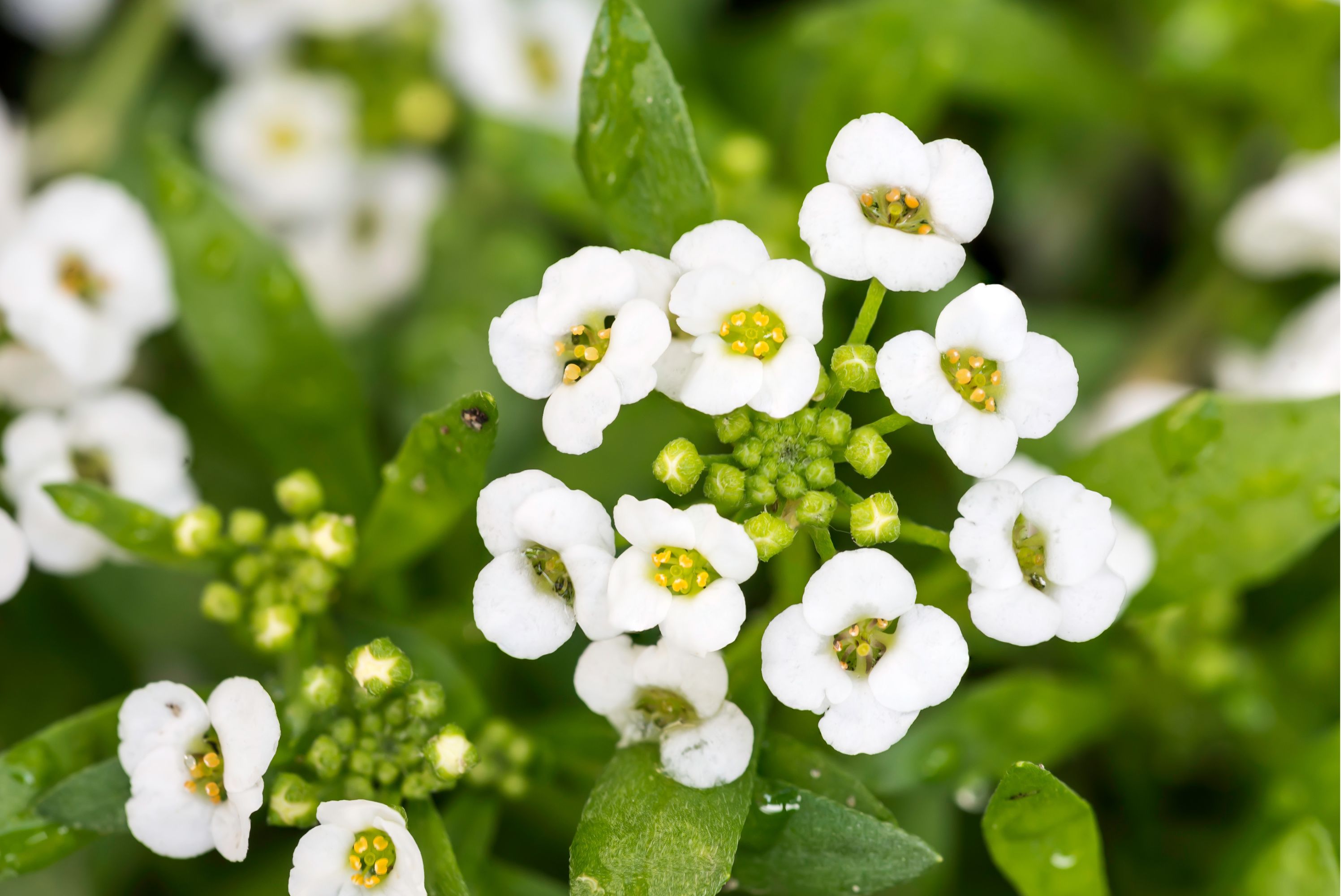Sweet alyssum
(Lobularia maritima)

Description
Lobularia maritima, commonly known as sweet alyssum or marine lobularia, is a popular annual plant species belonging to the Brassicaceae family. It is native to the Mediterranean region and can be found in various habitats, including rocky shores, cliffs, and coastal dunes. The plant has gained immense popularity among gardeners due to its easy maintenance, long blooming period, and sweet fragrance. In this article, we will delve deeper into the various aspects of Lobularia maritima, including its physical characteristics, cultivation, and ecological importance. Physical Characteristics Lobularia maritima is a low-growing, herbaceous plant that can reach a height of 15-30 cm (6-12 inches) and a spread of 20-30 cm (8-12 inches). The leaves are lance-shaped, green, and alternate, measuring 1-4 cm long and 0.5-1 cm wide. The flowers are small, about 4 mm in diameter, and come in a wide range of colors, including white, pink, purple, and lavender. They are arranged in clusters on branched stems that arise from the axils of the leaves. The flowers bloom profusely from late spring to fall, producing a sweet, honey-like fragrance that attracts bees, butterflies, and other pollinators. Cultivation Lobularia maritima is an easy-to-grow plant that prefers full sun to partial shade and well-drained, fertile soil. It can tolerate a wide range of soil types, including sandy, loamy, and clay soils. The plant is relatively drought-tolerant, but regular watering is essential to maintain its vigor and blooming. It is best to water the plant deeply once or twice a week rather than frequent shallow watering. Overwatering can lead to root rot and other fungal diseases. Sweet alyssum is usually grown from seeds, which can be sown directly into the ground in early spring. The seeds should be lightly covered with soil and kept moist until they germinate, which usually takes about 7-14 days. Alternatively, the seeds can be started indoors 4-6 weeks before the last frost date and transplanted outdoors after the danger of frost has passed. The plant can also be propagated by stem cuttings or division. Ecological Importance Lobularia maritima has several ecological benefits, including attracting pollinators and beneficial insects to the garden. The plant's sweet fragrance and abundant nectar make it a favorite among bees, butterflies, and other pollinators, which play a crucial role in plant reproduction and ecosystem health. In addition, the plant's leaves and flowers provide food and shelter for many beneficial insects, such as ladybugs, lacewings, and hoverflies, which help control garden pests naturally. Sweet alyssum is also an excellent plant for erosion control and soil stabilization, especially in coastal areas. Its deep roots and spreading habit help anchor the soil and prevent erosion, while its above-ground biomass acts as a natural mulch, retaining moisture and nutrients in the soil. Uses Lobularia maritima has several uses, both ornamental and medicinal. In gardens, it is often used as a ground cover, border plant, or container plant due to its low-growing habit and long blooming period. It can also be used as a companion plant to attract pollinators and beneficial insects to the garden. In traditional medicine, sweet alyssum has been used to treat a wide range of ailments, including respiratory infections, digestive disorders, and skin problems. The plant contains several bioactive compounds, including flavonoids, saponins, and alkaloids, which have been shown to possess antioxidants.
Taxonomic tree:







